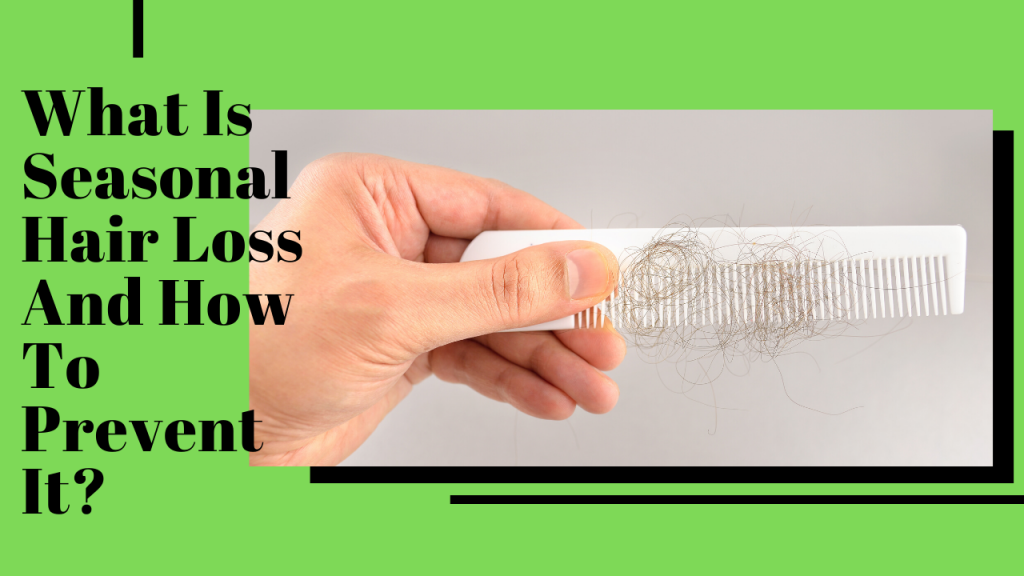Sudden hair loss of any kind is enough to freak you out a little bit. You start wonder “Why me,” but the truth is, it happens to more women than you think.
We automatically think life is over when we start noticing that we’re losing hair. When you start to see me a few more hairs left on your pillow or in your brush, but nothing in your life has changed, it could be seasonal hair loss.
Seasonal hair loss is almost always temporary, but it can really catch you off guard if you don’t know much about it. To understand it better, let’s compare the different types of hair loss.
Standard Hair Loss
Everyone’s hair sheds. It’s just usually not noticeable enough to become an issue. Our hair growth cycle makes sure that at any given time, more hair is growing than is falling out.
A person with healthy hair can expect to lose up to 100 strands of hair per day. Sounds like a lot, but it’s not noticeable. When your hair growth cycle is working properly, around 90% of your hair is growing, and only 7% is resting (and shedding).
As long as you’re seeing a consistent amount of hair left on your brush, you shouldn’t worry. It’s a natural part of the hair growth cycle. But when you start noticing more hair being left behind, it’s time to take a step back and see if something else could be going on.
Seasonal Hair Loss
Seasonal hair loss is also natural, but it’s caused by different factors. As you can imagine, scientists have been researching hair and its role for a long time.
Some time ago it was discovered that only reason we evolved to have hair on our scalp was to protect it from a harsh summer sun. When the sun was less intense (the cooler seasons), the hair wasn’t needed to protect the scalp.
That’s why the two most common times for seasonal hair loss are late summer and late winter. Those are the times when the weather is changing the most. Your hair is simply reacting.
How to Slow Down Seasonal Hair Loss
Seasonal hair loss is not something that you should worry too much about. If you know there are no other signs that it could be a more serious form of hair loss, you don’t need to change much in your routine.
That being said, there are a few easy ways to help your hair grow thicker to possibly fight the effects of seasonal hair loss. Here are two ways to do it:
1 – Use Fewer Styling Products
Styling products make your hair look great, but sometimes at a cost. You may not notice it, but sometimes you don’t wash out all of the product. If there is residue left from your styling products, they could be clogging your hair follicles which can cause serious damage.
Use lighter products, and make sure that you’re using organic whenever possible. Many of the organic formulas include all-natural nutrients that will help your hair grow and keep the area clean.
2 – Try Looser Hairstyles
Keeping your hair pulled too tight is bad for your follicles. If you’re noticing hair loss and like wearing tight ponytails or braids, try switching it up until you see an improvement in your hair.
Wearing these types of hairstyles too often will damage fragile hair and it might even cause your damaged follicles to get mixed up with healthy hair. This can cause even more hair to fall out. Wear your hair down to avoid this.
3 – Reduce the Friction
If you’re seeing more hair than normal in your brush or on your pillow in the morning, that’s a sign that you need to try and reduce the amount of friction. Too much rubbing around through the night can pull out damaged strands and tangle healthy ones.
The two easiest ways to reduce friction are replacing your cotton pillowcases with satin (or sateen) and swap out your cotton towels with microfiber. Two small investments that will absolutely reduce the amount of hair that falls out during this time of seasonal hair loss.
4 – Stick to Your Regimen
It’s never a good feeling to see your hair fall out, but in the case of seasonal shedding, it’s important not to overreact. Understand that it’s a natural process. Rather than running to the store trying to find a product that will stop any more hair from falling out, sometimes all it takes is a re-commitment to your normal routine.
Things like drinking enough water, getting enough sleep, and keeping a balanced diet can be far more effective than introducing new products into your hair care routine.
Talk to Your Doctor
If you are ever unsure about what’s going on with your hair, please don’t hesitate to talk to your doctor. Even if you’re almost positive that it’s just seasonal hair loss, it never hurts to check in and make sure everything’s working correctly.
While you should stick to a routine that’s been working for you, it may be worth looking into a daily hair growth vitamin that can give you an extra boost. An all-natural vitamin with ingredients like iron, biotin, and vitamin C and E is relatively inexpensive and can improve your overall hair health in just a few weeks.
Keep up a strong routine so that when seasonal shedding is over, you can kick-start your hair growth into high gear.



Comments are closed.